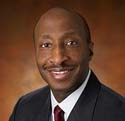Opinion: Needed—A New Paradigm for People-Centric 21st Century CEOs
- The 20th-Century Great CEO Model: A Strategic Focus on Shareholders and Process Management: Warren Buffet of Berkshire-Hathaway, Bill Gates of Microsoft, Jack Welch of GE.
- The 21st–Century Great CEO Model: A Strategic Focus on All Stakeholders and People Management Processes: Kenneth Frazier of Merck, Bill McDermott of SAP, and Colleen Wegman of Wegmans grocers.
The 20th Century Great Leader Model: A Strategic Focus on Shareholders and Process Management
The EEA believes Warren Buffet, Bill Gates, and Jack Welch are great American leaders who have made an enormous positive contribution to America, and undoubtedly will leave copious amounts of their wealth to worthy causes. This makes these great 20th-century leaders a useful contrast with the 21st-century CEO paradigm, who might leave less after their deaths because they invested more in people while they were alive.
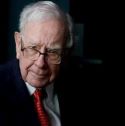


20th-Century CEO Strategic Focus
- Delivery of consistently high returns to investors through a strategic and systematic approach to process management; strategies designed to provide short- or near-term returns to investors, with serious consideration given to ethical business practices and the interests of other stakeholders.
- There is no publicly stated commitment to what today is called Environmental, Social, and Governance issues, per se, but neither is there malicious intent to violate regulations.
- Strategies and processes to maximize effective use of cash with genuine consideration given to risk mitigation with customers, employees, communities, investors, tax and regulatory bodies.
- Prevalence of silos and competition for resources between organizational groups because there is generally a reactive, ad hoc, and siloed approach to customer, employee, distribution partner, vendor, and community engagement focused on balancing costs against optimal stakeholder experiences.
- Generally, secondary consideration is given to people issues when making strategic decisions.
- A tendency by department heads to protect the status quo or their interests.
- The company sees little need to publish serious disclosures related to human capital management practices.
- CEOs are rewarded for financial performance regardless of sustainable business practices and, in the case of public companies, are rewarded for stock performance even if generated by stock buybacks as opposed to systemic growth.
- Risk mitigation is achieved in part through heavy investment in attorneys to address challenges and lobby for favorable regulations.
The 21st Century Model: A Strategic Focus on All Stakeholders and People Management Processes
For the 21st-century CEO paradigm, we use CEOs such as Bill McDermott of SAP, Kenneth Frazier of Merck, and Colleen Wegman of Wegmans, whose track records and views are highlighted in Enterprise Engagement for CEOs.
Strategic Focus
- Delivery of consistently high returns to investors through a strategic and systematic approach to addressing the needs of all stakeholders by creating a sense of purpose behind the brand that connects all interested parties and in so doing reduces risks of litigation.
- Implementing a holistic approach to keeping those promises to all stakeholders and focusing on processes that connect the dots between the organization and all interested parties, especially those internal or customer-facing employees or distributors responsible for delivering promises.
- Focus on strategies and processes to maximize effective use of cash with primary consideration given to achieving goals and reducing risks through a strategic and systematic approach to engaging all customers, employees, communities, investors, tax and regulatory bodies, as appropriate, in the organization’s brand, mission, values, and objectives.
- Create a brand, culture, values, and mission that connects all stakeholders and creates a seamless management process that breaks down the siloes between different departments to align activities and internal and external customer service.
- The CEO is measured on financial performance and share-price performance, as well as ESG (Environmental, Social, Governance) gauges, discounted at public companies for the performance of stocks after buybacks.
- Emphasis on delivering sustainably high returns through continuous improvement and innovation, with focus ethical business practices.
- A primary consideration is given to all people—customers, employees, distribution partners, communities, vendors, etc., as relevant—in all decisions because this will provide more sustainable returns for shareholders.
- The company publishes a Corporate Responsibility, Sustainability, or whatever name it gives to a transparent annual disclosure of its human capital as well as other sustainable management practices and considers this report fundamental to its business process.
- Risk mitigation is achieved through a proactive strategy of avoiding risks by creating a positive culture, rather than by waiting for problems to happen or investing in lobbying efforts.
Get the latest news and special offers from engagement solution providers and educators and more by signing up for our free Enterprise Engagement Engagement Advocate Network Program or Joining the Linked In Group
Master the Principles of Enterprise Engagement to Achieve Organizational Goals and Enhance Your Career
- Profit from a new strategic and systematic approach to engagement to enhance your organization’s brand equity; increase sales, productivity, quality, innovation, and safety, and reduce risks.
- Get trained to become a Chief Engagement Officer for your organization.
- Achieve ISO 10018 Quality People Management Certification to demonstrate your organization’s strategic commitment to people to your customers, employees, distribution partners, vendors, communities, investors, and regulators.
- Learn how to create Sustainability or Integrated Reports for Your Organization or Clients.
- Get up-to-speed on ISO human resources standards and guidelines to enhance HR performance.
Live Education: Enterprise Engagement in Action. Take advantage of scheduled monthly live webinar preparation courses for the Certified Engagement Practitioner designation consisting of three one-hour classes and of quarterly Advanced Engagement Practitioner courses consisting of three one-hour webinar classes. The AEP course is for individuals or teams seeking preparation ISO 10018 professional certification status. ICEE periodically runs regional one-day workshops on ISO 10018 Quality People Management principles and certification.
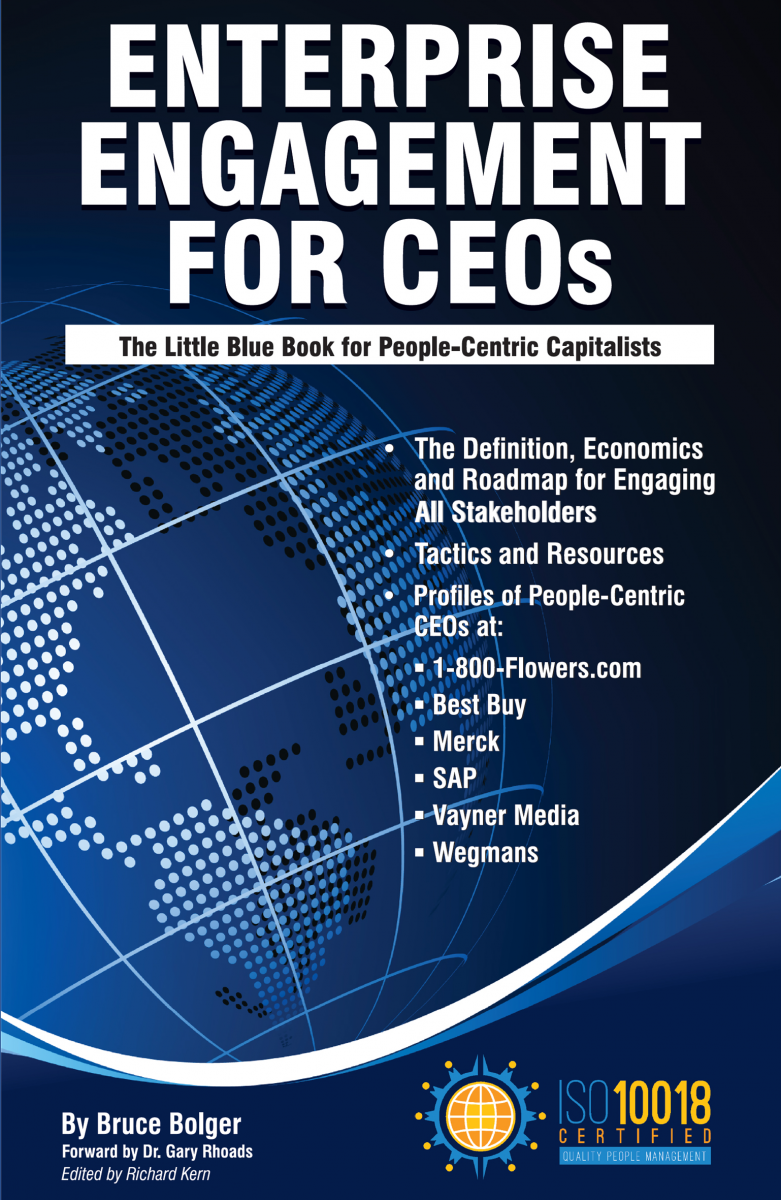
The first and most comprehensive book on Enterprise Engagement and the new ISO 9001 and ISO 10018 quality people management standards. Includes 36 chapters detailing how to better integrate and align engagement efforts across the enterprise. (312 pages, $36.)
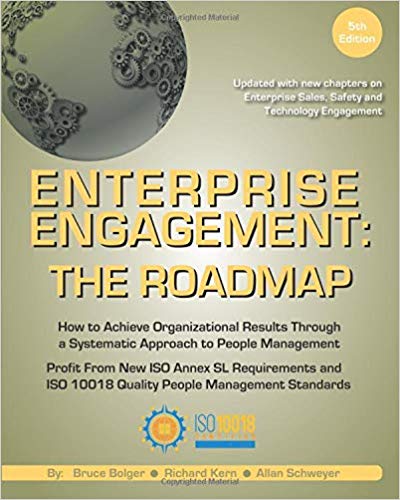 Online:
Online:
• 10-minute short course: click here for a 10-minute introduction to Enterprise
• Engagement and ISO standards on Coggno.com.
• 5-minute Audiopedia summary of the Enterprise Engagement field.
Services:
• The International Center for Enterprise Engagement at TheICEE.org, offering: ISO 10018 certification for employers, solution providers, and Enterprise Engagement technology platforms; Human Resources and Human Capital audits for organizations seeking to benchmark their practices and related Advisory services for the hospitality field.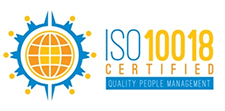
• The Engagement Agency at EngagementAgency.net, offering: complete support services for employers, solution providers, and technology firms seeking to profit from formal engagement practices for themselves or their clients, including Brand and Capability audits for solution providers to make sure their products and services are up to date.
• C-Suite Advisory Service—Education of boards, investors, and C-suite executives on the economics, framework, and implementation processes of Enterprise Engagement.
• Speakers Bureau—Select the right speaker on any aspect of engagement for your next event.
• Mergers and Acquisitions. The Engagement Agency’s Mergers and Acquisition group is aware of multiple companies seeking to purchase firms in the engagement field. Contact Michael Mazer in confidence if your company is potentially for sale at 303-320-3777.
Enterprise Engagement Benchmark Tools: The Enterprise Engagement Alliance offers three tools to help organizations profit from Engagement. Click here to access the tools.
• ROI of Engagement Calculator. Use this tool to determine the potential return-on-investment of an engagement strategy.
• EE Benchmark Indicator. Confidentially benchmark your organization’s Enterprise Engagement practices against organizations and best practices.
• Compare Your Company’s Level of Engagement. Quickly compare your organization’s level of engagement to those of others based on the same criteria as the EEA’s Engaged Company Stock Index.
• Gauge Your Personal Level of Engagement. This survey, donated by Horsepower, enables individuals to gauge their own personal levels of engagement.
For more information, contact Bruce Bolger at Bolger@TheEEA.org, 914-591-7600, ext. 230.



